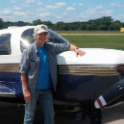Speed brakes for landing
-
Members Online
- PT20J
- PeteMc
- Fritz1
- rbmaze
- Steve Dawson
- exM20K
- ElkoRandy20J
- LANCECASPER
- marcusku
- kortopates
- jetdriven
- skyguy737
- Flyler
- Fly Boomer
- Jackk
- amillet
- Parker_Woodruff
- Moosethemooney
- 201er
- Mobius708
- Schllc
- varlajo
- M20F
- BobbyH
- ad5ut
- cbarry
- christaylor302
- AdamJD
- Rocket_Driver
- 47U
- Slick Nick
- ChuckSchneider
- Marc_B
- Bartman
- McMooney
- Jim Peace
- Lincoln
- N201MKTurbo


Recommended Posts